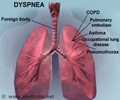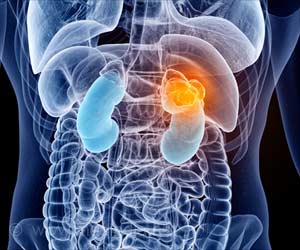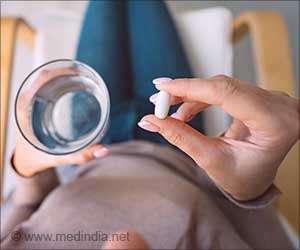Study says patients with a rare, deadly disease that mostly affects young women felt a dramatic reduction in breathlessness using an approved drug
Study results published online today in The Journal of Heart and Lung Transplantation say that patients with a rare, deadly disease that mostly affects young women felt a dramatic reduction in breathlessness using an approved drug.
The treatment, continuous intravenous (IV) treprostinil, has already been approved by the U.S. Food and Drug Administration for the treatment of pulmonary arterial hypertension (PAH) based on its similarity to an approved treatment delivered subcutaneously (directly into the skin). Practicing physicians and the experts writing treatment guidelines, however, had hesitated to endorse the treatment because it did not have its own placebo-controlled study. The current study addresses that deficiency, researchers said. Results confirmed that the study drug brought about a lifestyle-changing reduction in the main symptom of PAH: breathlessness due to related heart failure."A continuous IV infusion of treprostinil reduced feelings of breathlessness in these patients, really freeing them to move again," said R. James White, M.D., Ph.D., assistant professor of Medicine, Pharmacology & Physiology within the Division of Pulmonary and Critical Care Medicine at the University of Rochester Medical Center, and lead author of the study. "Patients went from a life where taking a shower caused breathlessness to one where they can take a long walk or climb a flight of stairs before they have that same feeling, a substantial improvement in daily capabilities," said White, who also conducts basic science research within the Aab Cardiovascular Research Institute.
Every Step You Take
The current study measured patients' feelings of breathlessness during a six-minute walk and how far they could go before having to stop. PAH researchers focus on breathlessness because the disease narrows the small pulmonary arteries, which drives up pulmonary blood pressure and causes right-sided heart failure. As the heart fails to deliver enough oxygen-rich blood to the organs, their cells scream for oxygen, which signals to the brain that a patient is out of breath, even though her lungs are working fine. During 12 weeks of treatment with treprostinil or placebo, the team found that patients treated with treprostinil could walk an average of 83 meters further in six minutes, a 30 percent increase.
The team also captured the severity of patient's symptoms using the Borg score, in which patients report on how breathless they feel during exercise. On the 10-point Borg scale, patients taking the study drug scored 2.0 units better on average than patients on placebo, a marked reduction in patients' feelings of breathlessness. Other drugs have been approved by the FDA that improved walking distance, but not Borg score, White said.
Another measure was whether treprostinil improved PAH patients' New York Heart Association (NYHA) functional class, an accepted tracking system for heart failure. Most patients started the study with Class III heart failure, meaning that they suffered "marked limitation of physical activity, fatigue upon exertion and shortness of breath." Intravenous treatment with treprostinil shifted patients on average from Class III to Class II, which takes a patient who is breathless with any activity and frees them to "bathe, get dressed, do household tasks and even return to work." Few other PAH drugs have been able to deliver this degree of functionalimprovement in controlled trials, said White, who also noted that thisis the first randomized, placebo-controlled trial of any IV therapy inPAH.
Advertisement
Tests also confirmed that PAH patients had higher than normal blood levels of factors known to play central roles in the clogging of arteries as part of major diseases like atherosclerosis and hypertension, including angiopoietin-2 (Ang-2) and platelet derived growth factor. Treatment with treprostinil was associated with lowers levels of Ang-2.
Advertisement
The study was conducted in India, where patients with PAH today experience a disease course much like patients experienced in the United States during the mid-1990s. While there are currently eight approved PAH-specific therapies in the U.S., there are none in India. Most patients there receive blood thinners and calcium channel blockers. Without specific treatment, PAH patients in India have a much higher mortality rate than U.S. patients.
Patients were randomized in a 2:1 ratio, so that more patients got active drug than did not, but researchers were still able to compare the drug's effect against placebo. All patients were offered treprostinil free of charge for life upon completion of the study. A local institutional review board reviewed each patient's progress continually, and all cases were reviewed for safety by phone with study leaders weekly. Safety reviewers closed the trial early after observing delays in rescue therapy due to "a lack of healthcare infrastructure" in India.
"Safety issues were a major problem" White said. "In the U.S., a patient who called in with signs of an infection would be assessed and treated within 6-12 hours. In India, a patient may have to take a 16-hour train ride to the nearest clinic. Given these barriers, we had to close the study. Still, the results provided valuable insights about the benefits of treprostinil that will help patients worldwide."
Mandeep Mehra, editor-in-chief of The Journal of Heart and Lung Transplantation, said of the trial: "Most approved treatments for PAH have been tested in North America, Europe or Australia. This study extends the geographic spectrum for clinical trials in PAH and provides insight into novel local, cultural and ethnic factors that may influence treatment outcomes, and represents another vital step in the globalization of medical care."
Source-Eurekalert
RAS











